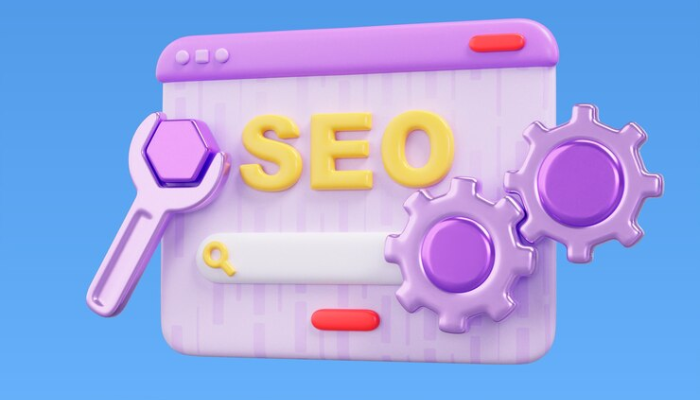
Bright SEO icon design is more than just a visual aesthetic—it’s a strategic tool for improving brand visibility and user engagement in the digital space. In today’s fast-paced online landscape, grabbing attention quickly is crucial, and a well-designed SEO icon can make all the difference. Whether you’re a digital marketer, business owner, or web designer, understanding how to use bright SEO icons effectively can elevate your brand and boost your click-through rates.
From increasing user interaction to strengthening your brand identity, a bright SEO icon is a small but mighty detail that can have a significant impact. This article dives deep into how and why you should incorporate these vibrant visuals into your website or digital platform. Let’s explore the strategies and best practices that can help you make your SEO icons not just noticeable—but unforgettable.
What Is a Bright SEO Icon and Why It Matters
A bright SEO icon is a visually compelling symbol or graphic that’s optimized for visibility in digital environments, especially in search engines and user interfaces. Typically designed with bold colors, clear shapes, and modern styling, these icons are used to draw attention, communicate quickly, and enhance the overall user experience. Unlike generic or muted icons, bright SEO icons are built to stand out amidst crowded content landscapes.
The importance of using bright SEO icons lies in their dual functionality: aesthetic appeal and strategic optimization. From an SEO standpoint, icons contribute to website UX and can indirectly influence SEO metrics such as bounce rate, time on page, and mobile usability—factors search engines consider when ranking content. A bright icon can guide user attention, encourage engagement, and ultimately improve your site’s performance in search results.
Key Elements of an Effective Bright SEO Icon
Designing a successful bright SEO icon involves more than choosing a vibrant color palette. It requires a careful balance of design principles and SEO best practices. Key elements include color psychology, scalability, relevance, and accessibility. The right color not only attracts the eye but also evokes emotion. For example, warm hues like red and orange are known for creating urgency, while blues and greens promote trust and calmness.
Scalability is another critical factor—your icon should be recognizable and impactful at various sizes, from browser tabs to mobile screens. Additionally, your icon should be contextually relevant to your content. A bright but unrelated icon can confuse users and dilute your message. Accessibility should also be prioritized: use high-contrast designs that can be understood by users with color vision deficiencies, ensuring inclusivity and usability.
Where to Use Bright SEO Icons on Your Website
Knowing where to place a bright SEO icon is just as important as the design itself. Strategic placement enhances usability and drives engagement. One of the most effective locations is in your website’s navigation bar. Using icons alongside text labels can simplify complex menus and help users identify sections more intuitively. For example, a bright magnifying glass icon for a search feature can instantly signal functionality.
Another key area is your call-to-action (CTA) buttons. Incorporating bright icons into CTAs such as “Download Now” or “Subscribe” can dramatically increase click-through rates. They serve as visual cues that reinforce the message and draw users toward taking action. Additionally, consider placing SEO icons in social proof sections, like testimonials or reviews, to emphasize credibility and reinforce branding.
SEO Benefits of Incorporating Bright Icons
While icons themselves don’t carry direct SEO weight in the form of keyword-rich content, their impact on user behavior and experience directly affects SEO performance. Bright SEO icons can help reduce bounce rates by guiding users more effectively through your website. Clear visual cues minimize confusion and make it easier for users to find what they’re looking for—keeping them on your site longer.
Moreover, bright icons improve mobile usability, which is a ranking factor in Google’s mobile-first indexing. In a mobile environment, screen space is limited, and intuitive, visually distinct icons can greatly enhance navigation and readability. Additionally, incorporating alt text with keywords in your icon files can contribute to image SEO, providing further indexing opportunities for search engines.
Tips for Designing and Selecting Bright SEO Icons
Creating or selecting the perfect bright SEO icon requires both technical know-how and creative finesse. Start with defining your brand’s personality—is it bold and energetic, or professional and trustworthy? This will guide your color choices and iconography style. Use vector formats like SVG for scalability and crisp resolution across all devices and screen sizes.
Don’t forget to test different designs. A/B testing icons in various placements and colors can yield valuable data on user preferences and engagement. Use design tools like Figma or Canva, and consider using icon libraries such as Font Awesome or Flaticon that offer SEO-optimized, customizable icons. Lastly, always compress your icons for fast loading speeds and make sure they are integrated with clean code to avoid slowing down your site.
Conclusion
Incorporating a bright SEO icon into your digital strategy is a small investment that yields big results. These vibrant visual elements can do more than beautify your site—they can increase usability, enhance branding, and improve key SEO metrics. By understanding their function, designing with intention, and placing them strategically, you can turn simple icons into powerful engagement tools.
Don’t underestimate the power of color and clarity in your visual assets. Whether you’re launching a new site or optimizing an existing one, adding bright SEO icons can be a transformative step toward better visibility and performance in the search engine world.
FAQs About Bright SEO Icons
1. What is a bright SEO icon?
A bright SEO icon is a visually striking graphic element designed to stand out and improve user engagement, often used in websites and apps for better visibility and usability.
2. How do bright icons affect SEO?
While not direct ranking factors, bright icons improve user behavior metrics like bounce rate and time on site, which are critical for SEO.
3. Where should I place SEO icons on my site?
Common areas include the navigation bar, CTA buttons, and feature sections where they can guide user attention effectively.
4. What colors work best for SEO icons?
Bright colors like orange, blue, and green are common choices due to their emotional associations and visibility, but they should align with your brand identity.
5. Can I create my own SEO icons?
Yes! Tools like Figma, Adobe Illustrator, and Canva allow you to design custom, SEO-friendly icons that reflect your brand.
6. Do SEO icons work on mobile devices?
Absolutely. Bright SEO icons improve mobile navigation and user experience, which in turn benefits mobile SEO.
7. Should SEO icons have alt text?
Yes, adding descriptive alt text helps with image SEO and accessibility, both important for search engine indexing.
8. How do I test which icons perform best?
Use A/B testing tools like Google Optimize to compare user interaction with different icon styles and placements.
9. Are there ready-made SEO icon libraries?
Yes, websites like Flaticon, IconScout, and Font Awesome offer extensive libraries of customizable and SEO-compatible icons.
10. Can icons help with branding?
Definitely. Consistent use of bright SEO icons reinforces your brand identity and makes your site more memorable to users.



